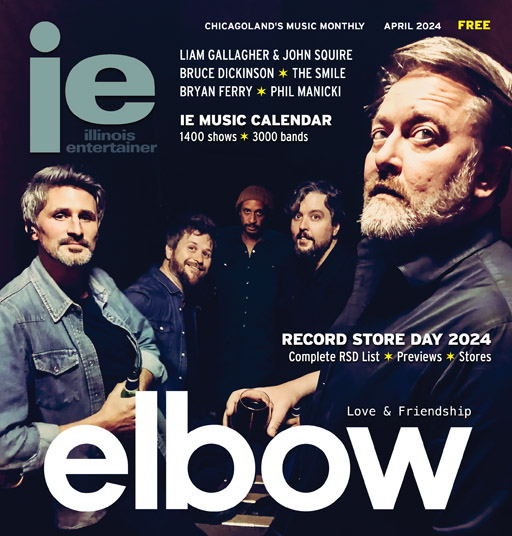Studio feature!
Price Point: Chicago Studios Adapt To The Home Recording Revolution
In the ever-changing music industry, recording studios are adapting and re-molding themselves to stay competitive. Not all studios have been able to fight the battle. Major institutions such as Hit Factory in New York and Cello in Los Angeles have closed. Some studios in Chicago are staying afloat successfully, while others simply tread water.
“I could tell you a dozen guys in the last couple years that have gone out of business,” says John Humphrey, studio manager of Engine Studios in Chicago.
“[In the last] five years there’s been a big upswing in home recording that’s effecting the studio business.” Humphrey believes this has a negative impact on studios because home recording enthusiasts now have access to higher quality recording material. “It’s something [studios] constantly have to compete with.” He reveals, “The effect is pretty dramatic.”
Don Griffin, owner of Studio VMR in Brookfield, doesn’t think the outcome is as evident. When asked if home recording is affecting business Griffin replies, “No, because it’s a professional studio and people who are going to put out records usually don’t do it from their house.” He notes, “Home recording is good for people to get their stuff together and organized — for people to write, arrange, and figure things out. But I still believe for a good finished quality record you need to come into a professional environment.”
Local musician Marcus Singletary, who will release Marcus Singletary Rocks (Aviation) on February 15th, has finished seven albums since 2001 using a combined approach of home and studio recording. He says although home studios are cheaper, “They will not provide the sound that you are searching for, but it can be a good arrangement for someone at the beginning stages of learning his or her craft, or for a musician with no funding.”
Garry Marthaler, owner of Blue Heron in Orland Hills, says people who buy expensive equipment trick themselves into thinking technology will do the work. “A lot of people think that if they buy ProTools they’ll be an engineer or producer, but they realize that the results aren’t like what you get at a real studio.”
“It’s as much to be a good mixer or mastering engineer as it is to spend your whole life perfecting an instrument. It’s just as much detail,” says Griffin. “[Home recording] is good for a demo and to put your ideas together, but that’s as far as it’s going to go.”
Even so, there has been a surge in home recording and Humphrey believes it is the cause for a shift in business, eliminating many smaller-budget clients. “I would think that home recording has chopped everybody who was looking to pay less than $500-a-day to record at least by 50 percent, easy,” he estimates.
Due to these shifts, studios are providing services to accommodate the new development. Humphrey says, “One thing for sure is the advent of all this technology has created another market. And that market is for transfers, editing, and fixing files.”
Griffin and Marthaler have both witnessed an increase in the service of mixing and mastering songs that musicians have already started at home. Marthaler says, “I get a lot of stuff where [artists] have done a certain amount of pre-production and then bring it to me to do the mixing or mastering.”
Singletary is also part of this movement of pre-production. Prior to going in the studio, he recorded all of the instrumental parts for two songs from his upcoming album using Cakewalk, a popular computer program that allows musicians to record, edit, arrange, and mix sound files at home.
Studios are now prepared for musicians like Singletary. “Now we have this whole digital/analog or just straight digital transfers,” says Humphrey. “They’ll record their stuff at home on Sonar [another recording program in the Cakewalk family], Cakewalk, or some other program and then they want to move it into ProTools to move up to the next step. I’ve done tons of work like that.”
Studios are changing the way they operate and ultimately altering their role so they won’t become the next to collapse.
Humphrey believes one thing that helps his business is a large recording space. “A lot of people with home studios don’t have access to huge, correctly designed recording spaces. We have one of the bigger live rooms in town and you can track a full band in a nice, acoustically designed room.”
To hear Marthaler, though, it might be the small studios, like Blue Heron, that hold the advantage in coming years. “With rap and hip-hop being so much more of a force than it used to be, the days of big facilities are sort of numbered because there isn’t so much of the full-band stuff going on and you don’t need that facility, and that’s part of what you’re paying for.”
— Jill Haverkamp
For the rest of this and other February features, pick up a copy of Illinois Entertainer throughout Chicagoland.










To me it’s the songs not the recording that is important. My band records in a small room and uses very little equipment. It’s the performance, it’s the mood, and it’s the material that carries a recording. Anyone can buy Pro tools and make a record with very little knowhow. In fact I always say who doesn’t have a CD these days, but in the end the cream will rise to the top. If your songs are good, and your recordings are at least listenable you may get some recognition.
braam
http://www.braammusic.com